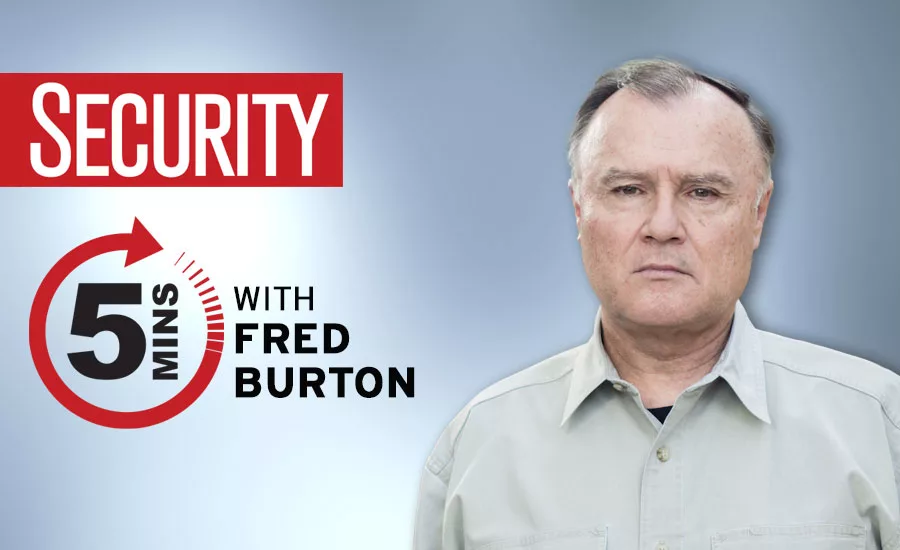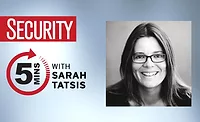5 minutes with Fred Burton - Why protective intelligence is needed in professional sports

When he won $1.1 million dollars in 50 days through sports betting, 24-year-old Ben Patz, better known as “Parlay Patz” was on top of the world. Now he faces five years in prison for threatening professional athletes and their families with unspeakable crimes after he lost a big bet. Patz’s actions point to the critical need for teams to protect their players and stay ahead of bad actors, particularly when a single tweet or photo gives a wealth of information on an athlete’s location and security situation. Here, we talk to Fred Burton, NYT best-selling author, former special agent, counterterrorism expert, and executive director of the Ontic Center for Protective Intelligence about athlete’s threat profiles and how protective intelligence can help keep them and their fans safe.
Security: What is your background? And current responsibilities at Ontic?
Burton: I have had a long career in the physical security industry, which began in the U.S. Secret Service and continued with the U.S. State Department. I was a special agent and deputy chief of the counterterrorism and protective intelligence division of the State Department's Diplomatic Security Service, where I led countless high-profile investigations, including the hunt for and arrest of Ramzi Yousef, the mastermind behind the first World Trade Center bombing. I also coordinated protective intelligence efforts for several national-level special events, including the 1996 Olympics in Atlanta and several United Nations General Assemblies and Middle East Peace Conferences.
Today, I am the Executive Director of the Ontic Center for Protective Intelligence, which provides strategic consulting, services and resources for safety and security, risk and compliance, and legal professionals at major corporations. Through the Ontic Protective Intelligence Podcast and my books, I confer with other security experts to provide insights on trends in physical security, protective intelligence methodologies, and how these topics are affected by developments in corporate and national security.
Security: How have threats and vulnerabilities changed for the stadium and sports safety/security space?
Burton: Protection for sports venues has come a long way since my time coordinating protective intelligence operations for the State Department at the 1996 Olympics in Atlanta. In those days, the bulk of our intelligence efforts were manual, including typed BOLO's. Technology solutions continue to lead the way in the protection space, allowing for the seamless collection and rapid dissemination of threat data, such as photos of threat actors. Additionally, physical security tools like License Plate Readers (LPR's) and Image Matching greatly enhance holistic security efforts, along with simplistic solutions like transparent plastic bags.
Security: How can professional teams and security leaders protect their players and stay ahead of bad actors, particularly when a single tweet or photo gives a wealth of information on an athlete's location and their security?
Burton: Education, training and situational awareness are critical, along with an open dialogue between the security team and the VIP. High-profile athletes can draw fixated persons, criminal actors, and unwanted attention to their families and homes through personal and location information disseminated via social media. It's also important for the players to talk to family members about social media discipline when it comes to location data.
Security: How can protective intelligence help keep professional teams secure and give security leaders a leg up on the monitoring and safety of the players, and fans? Including for sports team travel security?
Burton: First, let's start with how we define the topic. Protective Intelligence is an investigative and analytical process used by protectors to proactively identify, assess and investigate threats to protectees. The threat landscape is never static; it's dynamic and fluid. Thus, an always-on continuous monitoring platform is needed to stay in front of threats and see around the corners. It's also important to remember that threat actors travel and can divert their focus of interest to other targets if their original fixation is unaccessible.
Security: Could you talk about how security leaders can go about drafting an athlete's threat profile, and how this helps manage risk and threats?
Burton: First, a comprehensive baseline threat assessment should be conducted for the team and the owners. This should include crime and security-related problems around the home venue and residences, including vacation venues.
Second, each high-profile athlete should also have a baseline threat assessment conducted to understand the degree of potential security-related problems and concerns. It would also be important to have great liaison relationships with the league headquarters and their counterparts at other teams to understand the scope of potential problems "dragged" to your venue by other high-profile athletes. For example, even if your players are relatively risk-free, it's important to gain knowledge of those threats traveling to you for games.
It's also critical to maintain a good working dialogue with the local, state and federal law enforcement partners to understand trends and regional threat patterns from terrorism to crime.
Looking for a reprint of this article?
From high-res PDFs to custom plaques, order your copy today!







